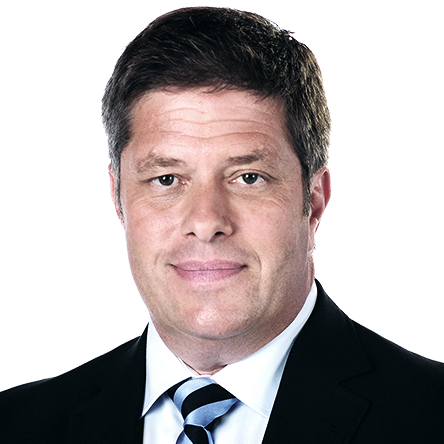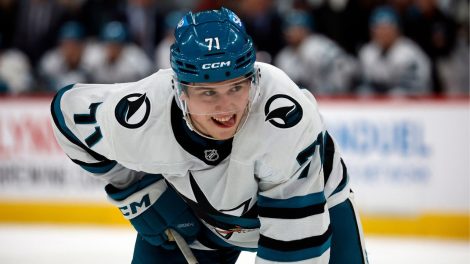It is like the old adage when a team’s power play is struggling, decline the penalty! Such seems to be the dilemma of possible future captains of the Toronto Maple Leafs.
Truth be told, it is still a very much coveted position. A position Leafs fans should prepare to welcome a player that chooses to rise to the challenge and embrace the position as team captain and leader in the most scrutinized and high-profile NHL market in the world.
Though recent captains might have parted under disappointing and, at times, bitter circumstances, they will always hold the opportunity in high value.
While each year grows more and more of a distant memory to the last Maple Leafs Stanley Cup victory in 1967, the search for a Leafs captain who basically ended his career on positive terms with the Leafs goes back almost as far.
That person would be George Armstrong. Armstrong served as captain from 1957-to-1969 and was the first player to hoist the Stanley Cup in the franchise’s last four championships.
Former owner Conn Smythe would often say that the smartest move he made as the team owner and general manager was to name George Armstrong captain of the Maple Leafs. While Johnny Bower, Dave Keon, and Tim Horton had higher on-ice profiles during their Leafs careers, the value of Armstrong’s leadership with both veterans and younger players was a huge and underrated element of those successful teams.
Armstrong insisted on stepping aside and letting the team’s on-ice leader Dave Keon assume the captaincy in 1969, even though Armstrong would play two more years with the franchise. Armstrong would then assume a role as a Leafs scout and coach for their very strong Toronto Marlboro teams. He remains a Maple Leafs scout today.
From that point on, the often unfortunate circumstances on the ice for the Maple Lefas would be mirrored off the ice. Keon would leave the team under extremely bitter terms in 1975 and head to the World Hockey Association. The focus of his issues seemed to be with then owner Harold Ballard, but then got more muddled as Keon resisted repeated overtures to be welcomed back into the fold for decades after Ballard’s death in 1990. He wouldn’t bring things full circle with his team until 2016.
Darryl Sittler relished the role as a young Leafs captain after Keon in 1975. The captaincy played a large factor in him turning down a more lucrative contract with the Toronto Toros of the World Hockey Association to remain with the Leafs.
Sittler would have two battles that would ultimately result in him leaving the team. His first was with the second coming of George “Punch” Imlach as general manager in 1979. Imlach decided that he was going to take firm aim at an internal players’ leadership group that he felt had created an adverse “country club atmosphere” within the dressing room. The team captain ended up being target number one.
With Sittler’s no-trade contract, Imlach chose to get even by trading Sittler’s best friend Lanny McDonald to the Colorado Rockies in 1979. Though it could be argued that there were merits to a real hockey trade with the Leafs getting Wilf Paiment and Pat Hickey in return for McDonald and Joel Quenneville, that sentiment wasn’t shared by Sittler. He publicly took the “C” off his jersey immediately after the trade.
With Imlach’s power base basically gone months later, Leafs’ owner Harold Ballard reinstated Sittler as captain, but Sittler’s off ice woes continued.
Sittler felt that he had a promise in place from Ballard to renegotiate his NHL contract. With Imlach gone, Sittler thought this would be a slam dunk. It was Sittler who felt slammed when Ballard refused.
Sittler left the team in January of 1981 citing depression issues. A month later he was traded to the Philadelphia Flyers and his Leafs career ended with a whimper and not a bang. To add insult to injury (literally), years later he would suffer a broken orbital bone when hit into the boards by Leafs’ Jim Korn when Sittler was with the visiting team in a game at Maple Leaf Gardens.
Ballard was anxious to name a new captain immediately after Sittler left the team. Rick Vaive was more than willing to accept that role at just 22 years of age. Vaive wore the “C” with great pride for four seasons, including three in which he scored 50 or more goals.
On a team lacking internal leadership, Vaive did his best in that department and publicly took his role very seriously and was very involved in community and charity events.
In 1986, Vaive had slept in and missed a team practice while on the road in Minnesota. That was the last straw for a management group that was looking for more direction from their team captain. Management made the decision to strip Vaive of the captaincy. It broke Vaive’s heart, but he was the consummate professional for one more year in a Leafs uniform before being traded to Chicago. The Maple Leafs’ captaincy remained vacant for three years.
Rob Ramage was acquired by the Leafs from Calgary in June, 1989 for a second-round draft choice. While at first Ballard was upset at hearing how much Ramage was earning (the 86-year-old owner did not live in the present when it came to finances), he began to change his tune when all he heard was positive words about the trade and about the character of Ramage.
Ballard named Ramage captain of the Maple Leafs without ever having met the man. Ballard’s line to the media about naming Ramage captain was “I’ll tell him when I see him.” Giving the “C” to Ramage was the last tangible hockey decision Ballard made.
Ramage had a decent two years for the Leafs before being lost in the Expansion Draft in 1991. His departure lef the franchise with an obvious choice, albeit the right choice, for captain in Wendel Clark. Credit the kid from the small town of Kelvington, Saskatchewan. He embraced the role as anyone has before or since.
Clark would leave the Leafs in the zenith of his career when he was traded to Quebec in 1994. No bitterness in his departure, Wendel Clark was like a rock star when he left Toronto. Clark was so popular that owner Steve Stavro decided a few years later that he had to be reacquired by the Leafs because he was constantly barraged by fans and customers at his Knob Hill Farms grocery stores to bring back the beloved winger.
Another obvious choice followed Clark in 1994 when Doug Gilmour was named captain. Gilmour would leave more disappointed than bitter in 1997 when he was traded to New Jersey. Gilmour was frustrated by a cash-strapped Leafs team that had moved players like Dave Andreychuk, Todd Gill, and Mike Gartner to unload salary and had chosen not to meet a reasonable salary price for a free agent named Wayne Gretzky.
Yet another obvious choice followed Gilmour. Enter captain Mats Sundin in 1997. An 11-year run as Leafs captain would follow and Sundin would cement his status as a future Hall of Famer. Off the ice, like George Armstrong decades earlier, Sundin was an underrated team leader. His quiet demeanour had many fans mistakenly question his ability to be a leader. Ask any of his former Leafs teammates what they thought of him as captain and the answer would be extremely positive.
The manner of Sundin’s departure in 2008 would be unfortunate in that he would be vilified by the very Leafs fans who had cheered for him.
The very public knowledge that he would not waive his no-trade clause had Sundin leaving with bad feelings on both sides. Fortunately, unlike Keon, this would be rectified in a short period of time as he would be honoured and cheered back at Air Canada Centre in 2012.
Dion Phaneuf was not an obvious choice to be named Leafs captain. As a matter of fact, it came as a surprise that he would be named captain so soon after being acquired by the Leafs. He was viewed as Leafs coach Ron Wilson’s teacher’s pet. He was more like Vaive, he took his role very seriously but was with teams that struggled on the ice.
The whole Salutegate episode in 2014 had everyone wondering about the state of the Maple Leafs’ leadership group, with Phaneuf being a lightning rod for much of the criticism.
Brendan Shanahan and Mike Babcock moved to shelter Phaneuf from some of the spotlight associated with being captain of the Leafs, which allowed the player to leave the franchise on good terms.
Despite the many warts associated with it in recent Leafs history it seems like a help wanted ad need not be posted to find who is next. There will be plenty of those willing.
Like everything being subscribed to in Leafs Nation nowadays, just do it RIGHT! Which means wait at least a year.








